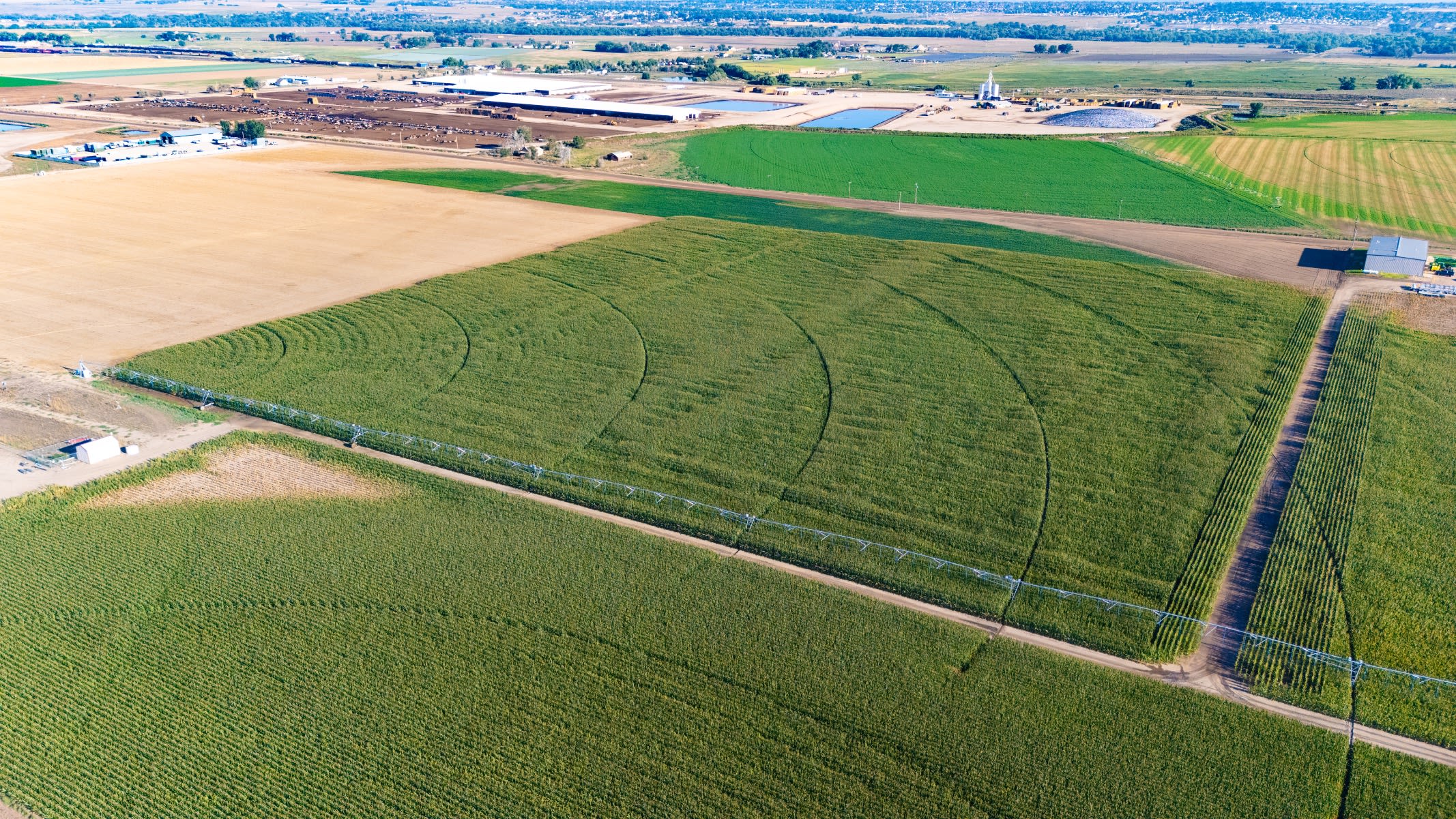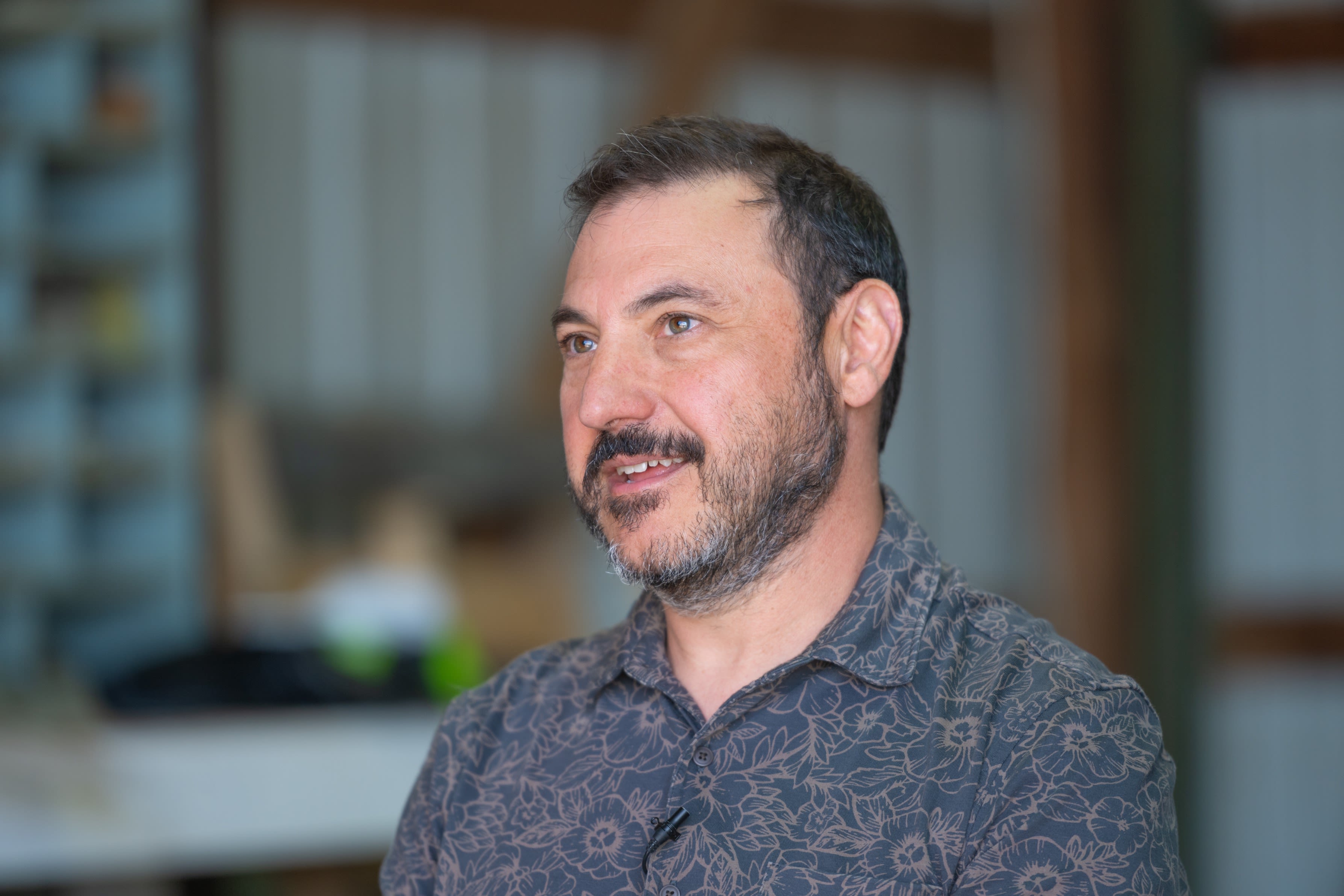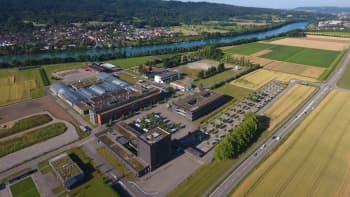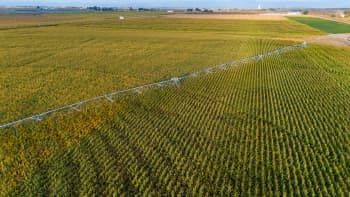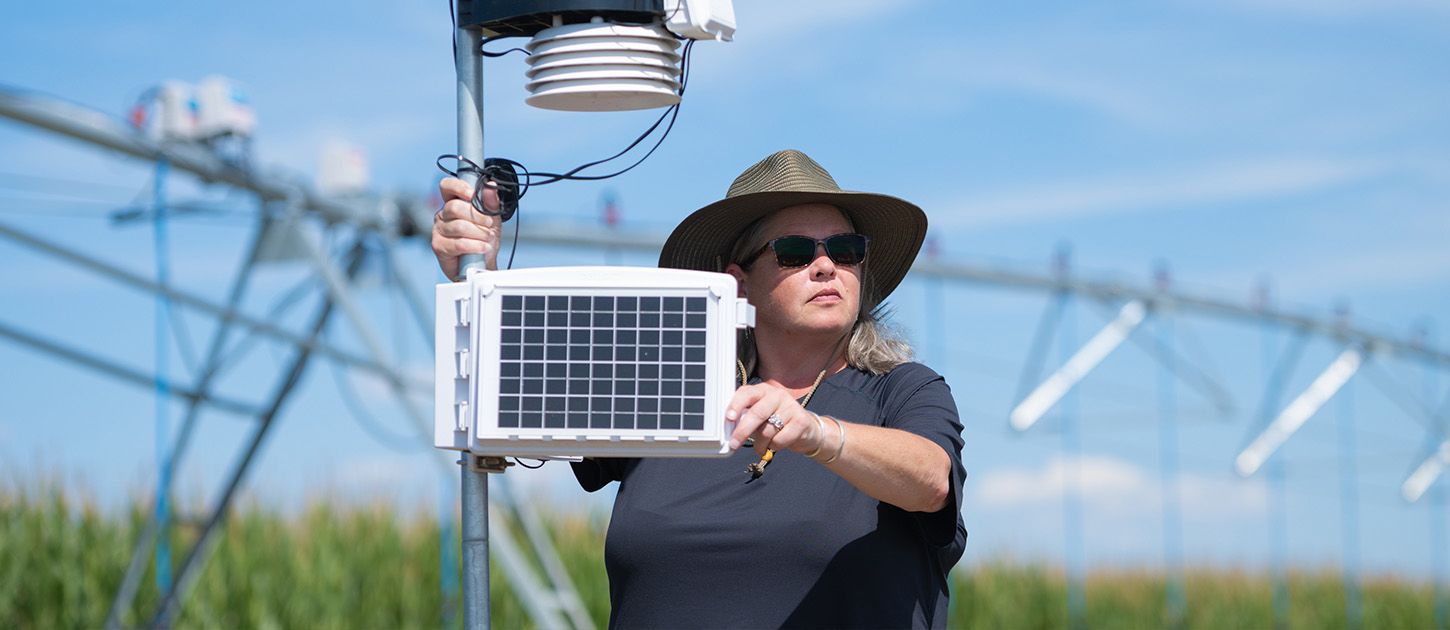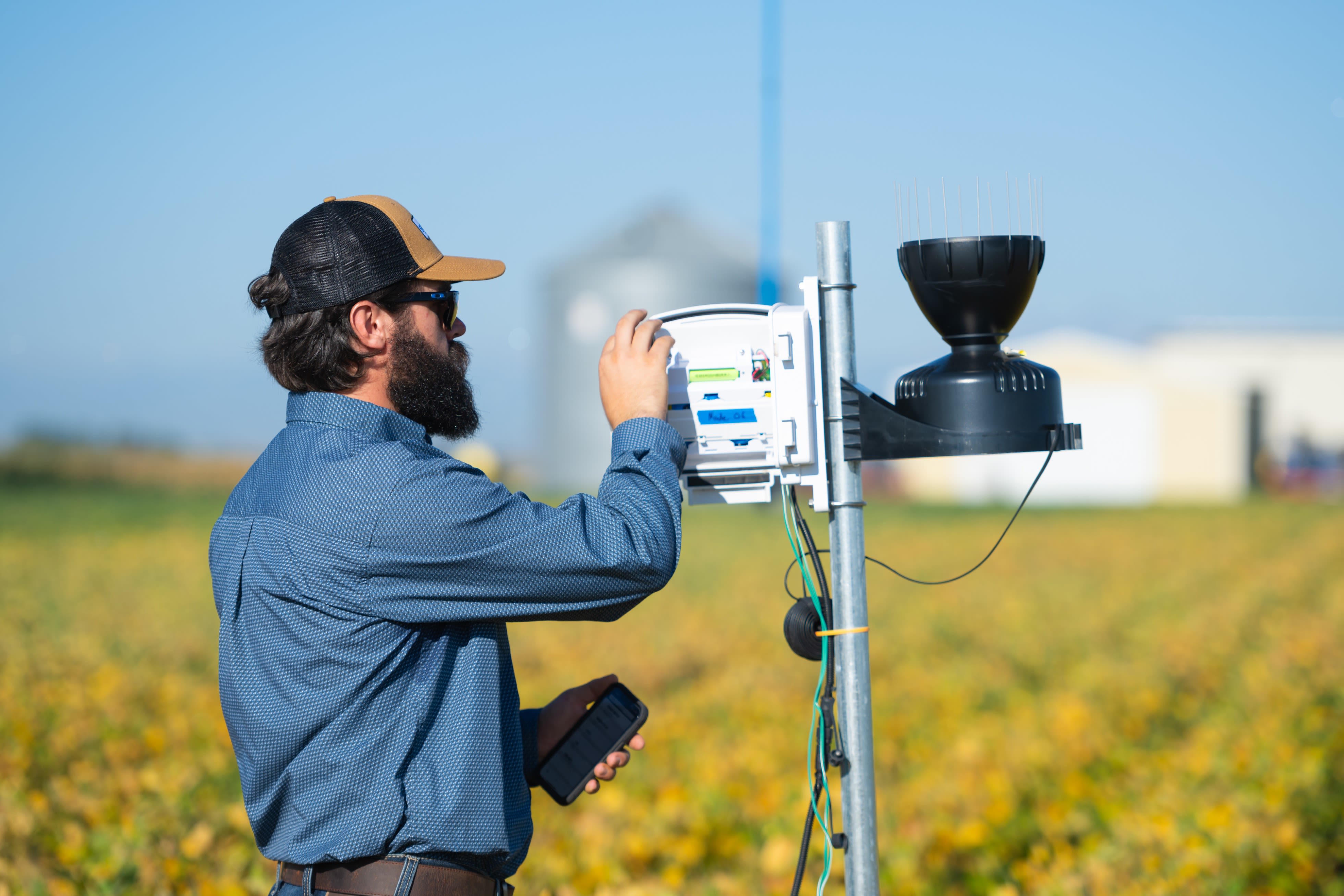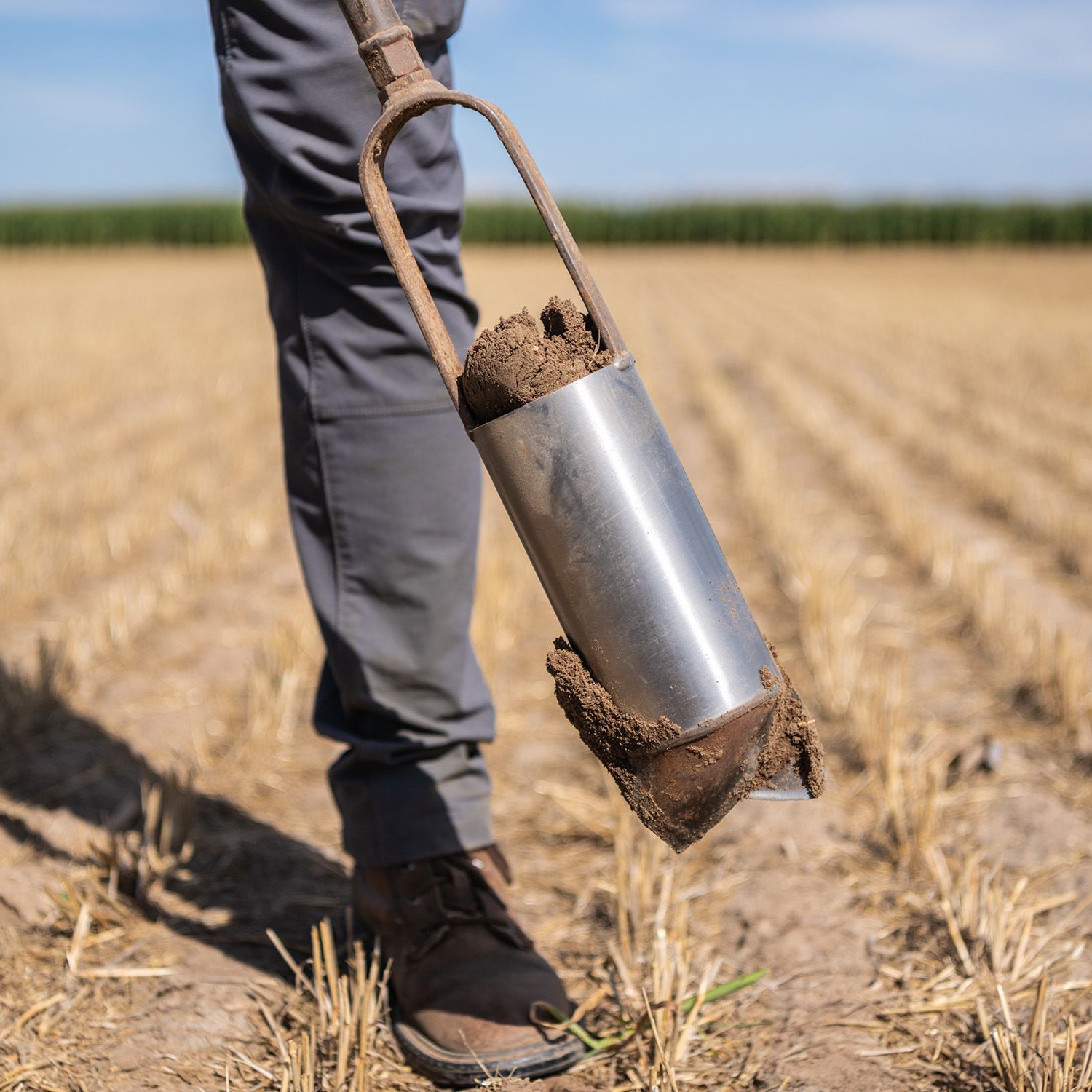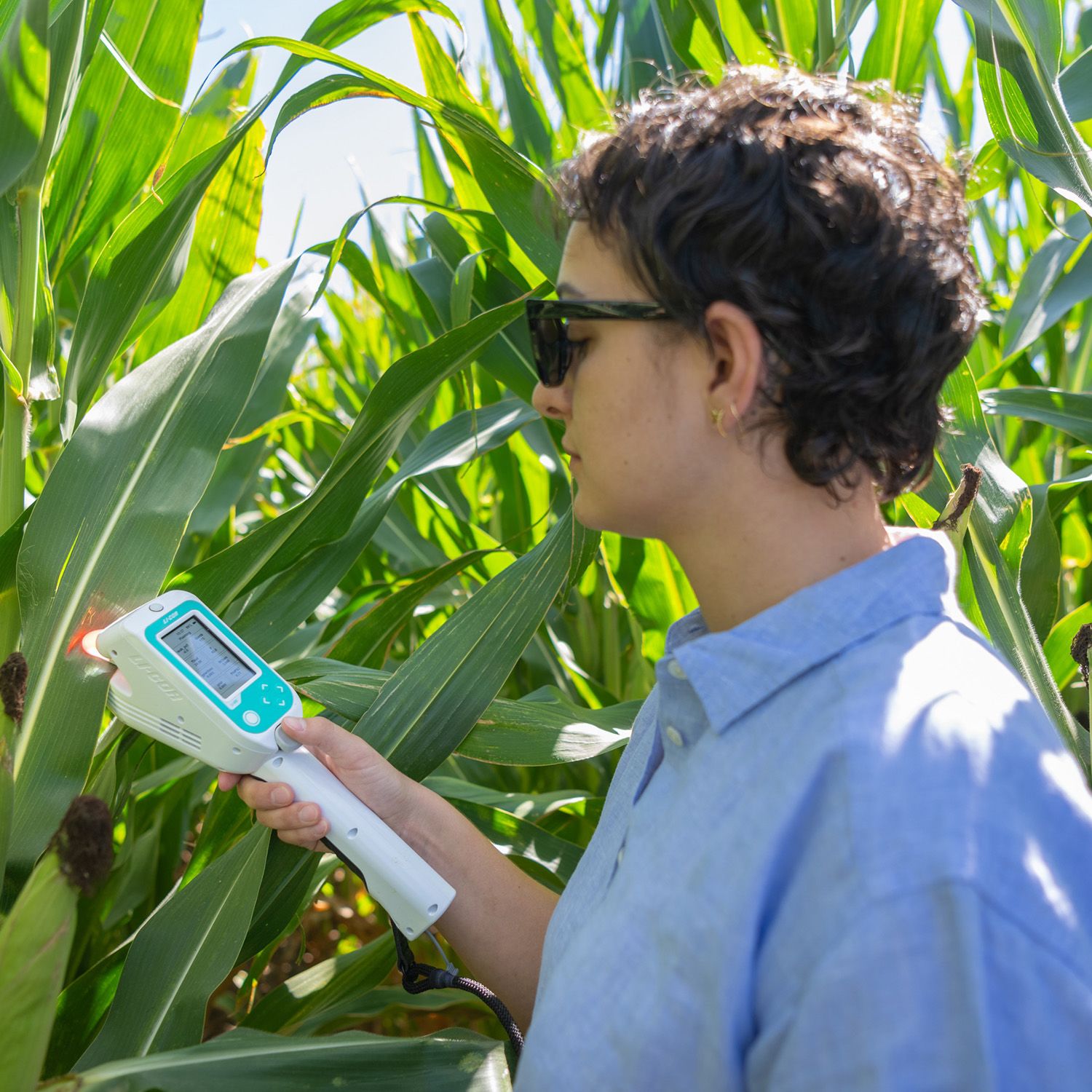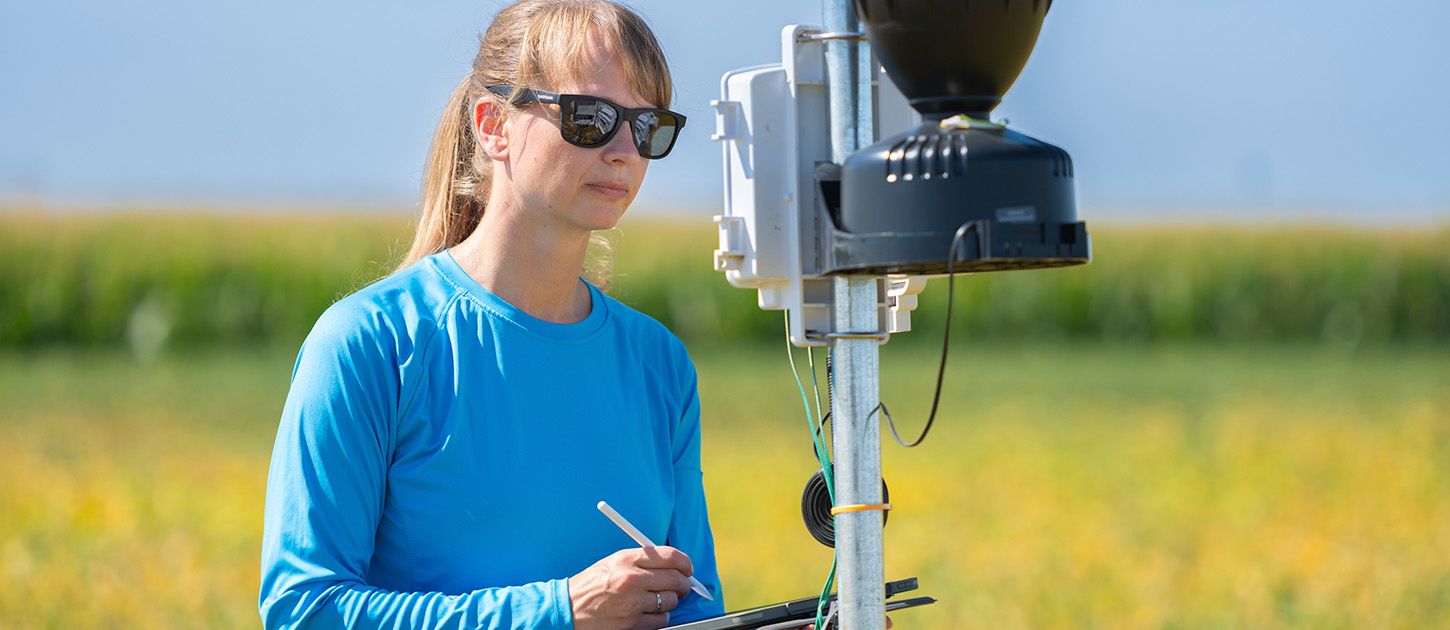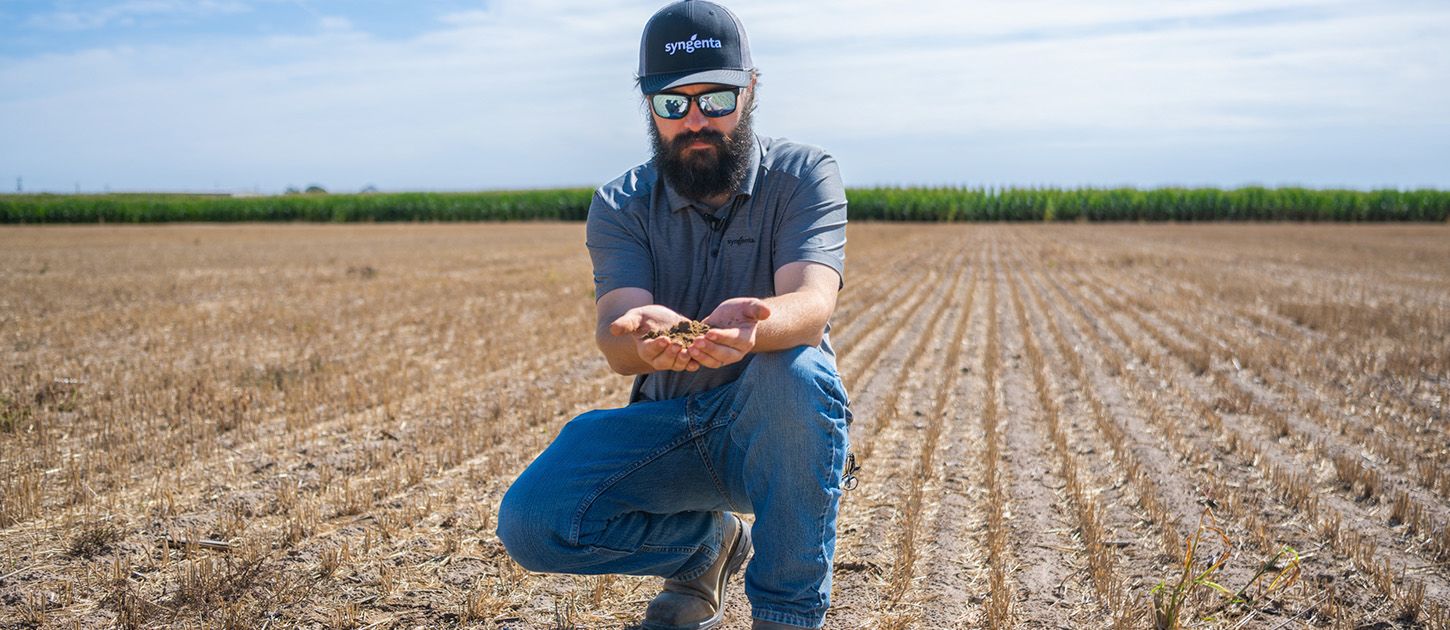The next frontier in agriculture:
Using 'soil intelligence' to drive farm productivity
Digging into soil science - part three
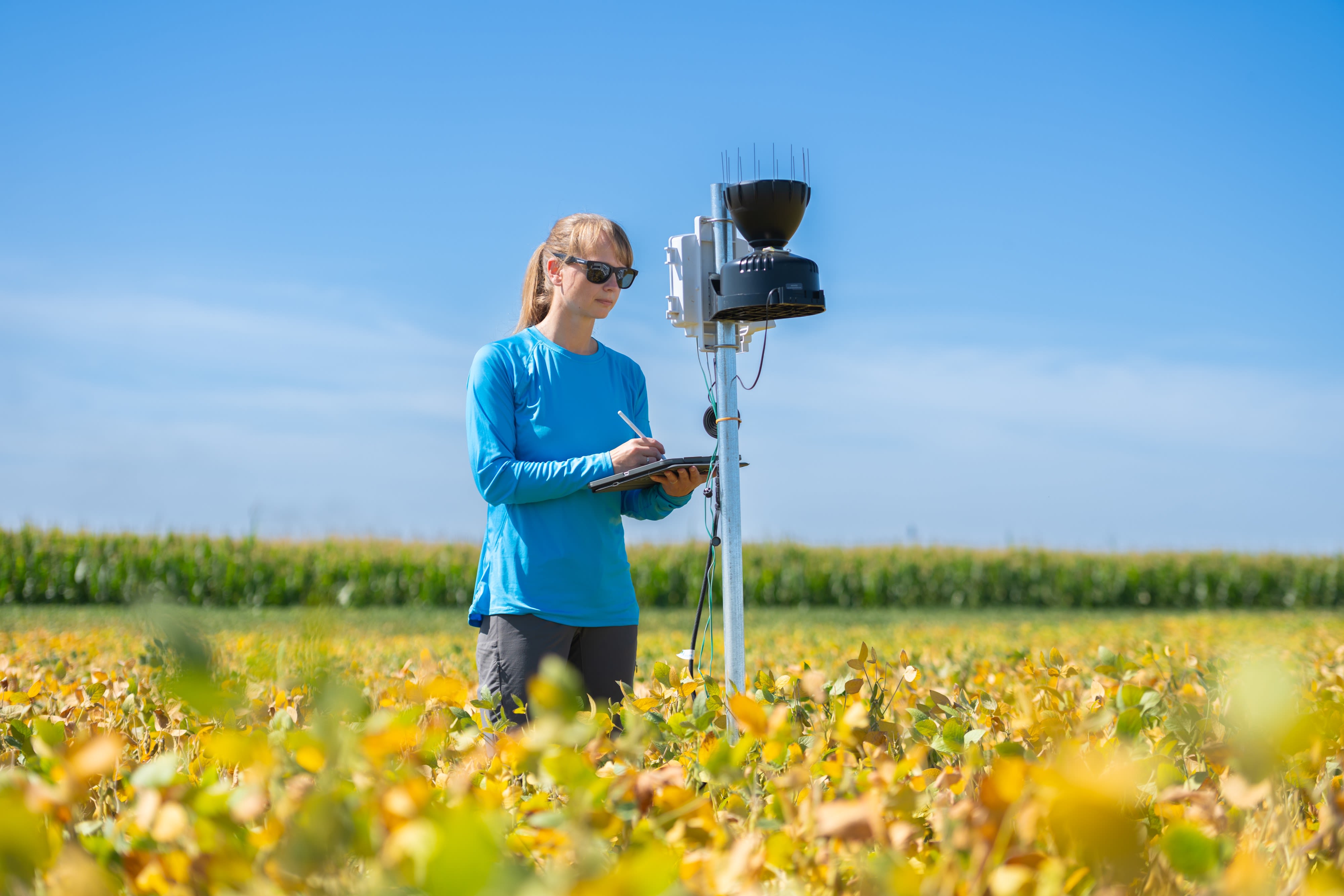
LaSALLE, COLORADO — Amid the farms and cattle ranches here in northern Colorado, Syngenta’s soil health team is using digital technologies and data science to better understand one of the most pressing issues facing farmers: How to build and maintain fertile soils at a time when soil health is at risk throughout global agriculture.
At LaSalle and elsewhere in research centers around the globe, Syngenta scientists know that progress will require new insights and new techniques for monitoring and measuring soil health. For more than 70 years, farmers have sent soil samples in resealable plastic bags to labs for analysis. But while this conventional method of testing provides some useful metrics on the composition of soil, it considers only a small, narrow slice of the broader landscape. And this type of lab analysis can be costly, slow and varying in accuracy.
LaSalle Soil Health Research Center, Weld County, Colorado
LaSalle Soil Health Research Center, Weld County, Colorado
And that’s a serious limitation as soil health becomes a growing concern. Erosion, compaction, excess salinity and other forms of land degradation are taking their toll on the planet’s soils. All of which is made worse by climate change as driving rains, high winds and other weather extremes wash or blow away not just the topsoil, but essential nutrients.
This explains why agriculture is moving from chemistry-focused nutrient management to biologically integrated soil-health measurements. With the right information, farmers can not only nurture and protect soil, but even restore it. Syngenta is tackling this challenge with data, digital tools and analysis — what Syngenta Chief Soil Scientist Matthew Wallenstein calls “soil intelligence.”
Wallenstein and his team of researchers are combing through stockpiles of existing data and gathering data from new sources. All this information is being studied to provide a better understanding of the many variables involved in soil health.
“We want to go beyond the general concept of soil health,” explains Wallenstein. “We need to be able to connect how practices change our soil health measurements and then link those changes to specific outcomes.”
Matt Wallenstein, Chief Soil Scientist, Syngenta Group
Matt Wallenstein, Chief Soil Scientist, Syngenta Group
That last step — enabling positive outcomes — is crucial because any potential increases in farm productivity and sustainability are strong incentives to farmers looking for ways to improve soil-health management. Conventional soil sampling generally doesn’t involve this kind of outcome-oriented approach.
“The demand for quality information about soil health is higher than the supply right now,” says Jordon Wade, Soil Health Assessment Group Leader at Syngenta.
Accelerating soil regeneration
Globally, Syngenta has hundreds of researchers focused on the opportunity to drive productivity, profitability and other positive outcomes with better soil-health data. They’re exploring soil at farms, facilities and test plots around the world, including the company’s Soil Health Center in Stein, Switzerland. In Stein, scientific analysis has already contributed to advanced solutions like TYMIRIUM® technology, which gives broad-spectrum protection against nematodes and key fungal diseases.
Soil health requires a holistic approach. Pablo Rugeroni, Global Agronomy Lead of Large Farms and Soil Health with Syngenta’s international Seedcare Institute, compares analysis of soil conditions to a medical diagnosis. “Depending on the health issue, we address it with different solutions,” he says.
The Seedcare Institute provides science-based services to help farmers around the world maximize crop yields and quality. A project is underway in Pergamino, Argentina, for example, to apply the latest digital technologies, laboratory analysis and sustainable agriculture practices to create tailored solutions to large-scale farms in that country.
“There is a lot of variability,” Rugeroni says. “Not just within a country, but within a farm and even inside the same plot. With digital technologies, you can map the soils, be more precise, and apply the right solutions in the right places.”
In LaSalle, meanwhile, digital analysis of the type that’s at the core of the team’s work promises to give agronomists and farm managers increased visibility across wide swaths of land, allowing them to take proactive measures that are more strategic and far-reaching in scope. “We want to help farmers improve soil, farm by farm,” says Wallenstein. “But we also want to do it on a global scale.”
There’s reason for optimism. Ongoing programs at working farms have shown promising results. “I've been surprised,’’ Wallenstein says, “at how rapidly soil health can be restored — even more quickly than the science suggested.”
For example, there have been faster-than-expected improvements to degraded pastureland in Brazil’s expansive Cerrado savanna, through a restoration project called REVERTE® that Syngenta is conducting with partners including The Nature Conservancy. And soil health metrics are trending in a positive direction on the Illinois family farm operated by Syngenta Group CEO Jeff Rowe after just a few years of cover crops and other regenerative agriculture practices — significantly faster than the 10- to 15-year horizon that is sometimes used as a timeline for progress.
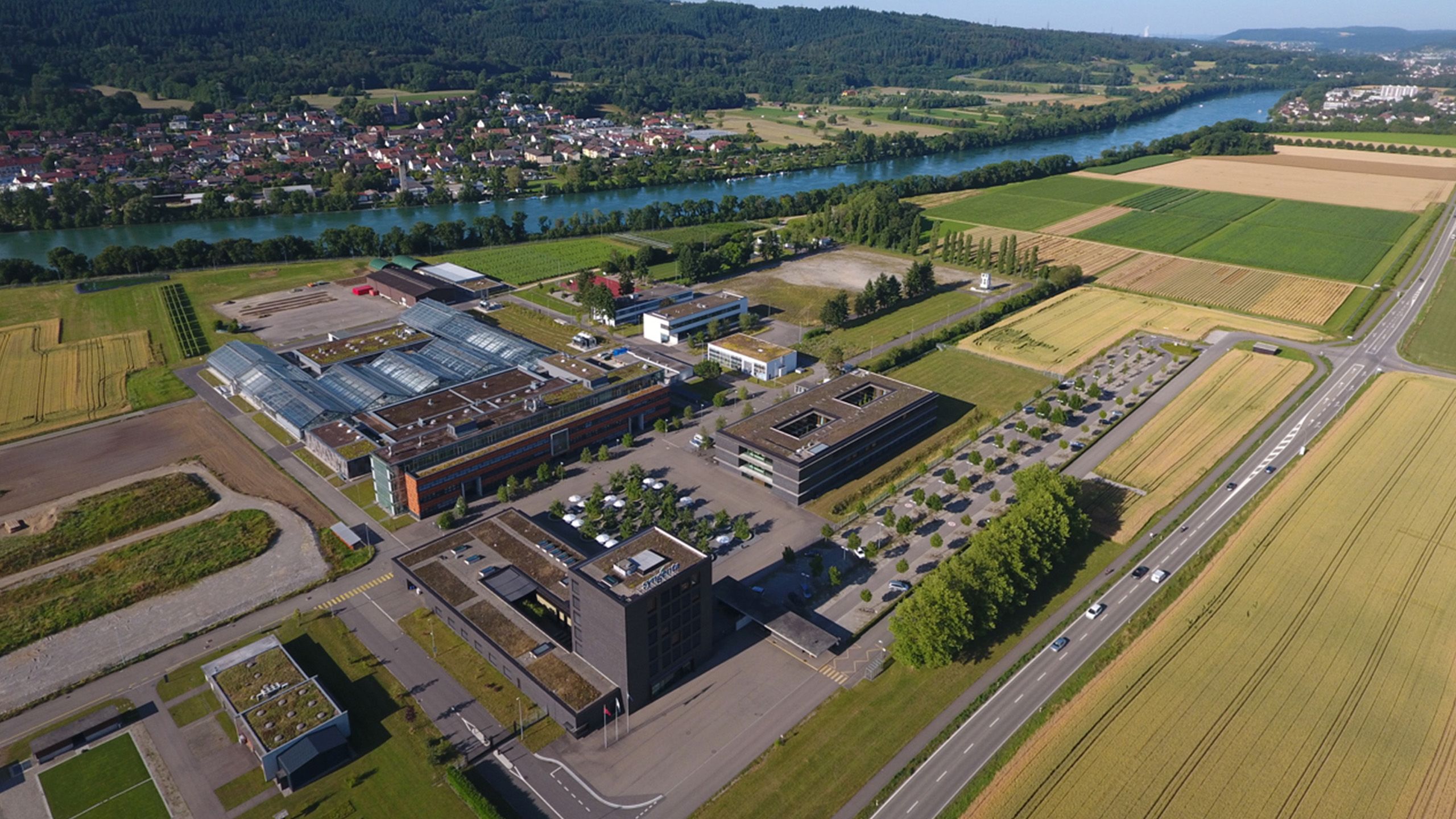
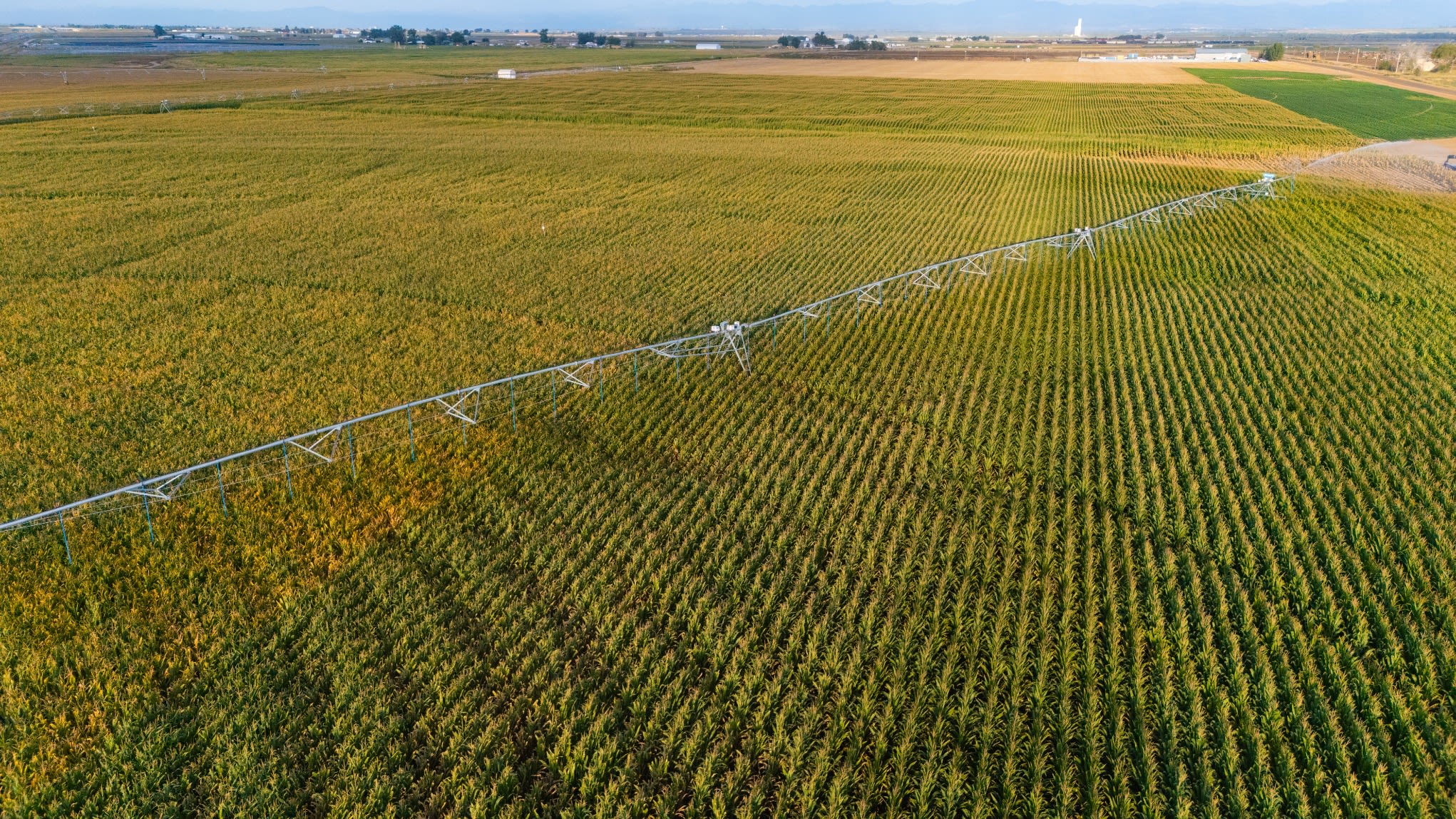
Soil research as a two-way street
The United Nations has estimated that as much as 40% of the earth’s soil is moderately or severely degraded and warns that the problem could get worse.
Syngenta has hired some of the world’s leading soil scientists to help reverse this trend. “We’re bringing the knowledge in-house,” says Wallenstein, a former professor of Soil and Crop Sciences at Colorado State University. “But you’ve also got to get out in the field, then bring the grower perspective into our research enterprise. It’s a two-way street.”
Syngenta obtains this real-world perspective in several ways. Most importantly, the company works directly with farmers to understand their soil management challenges and help them maximize crop yields with services like INTERRA® Scan, which provides high-resolution maps of soil nutrients, texture and carbon content. More broadly, Syngenta is partnering with organizations including The Nature Conservancy to recover and restore degraded land in Brazil, China and other areas of the world.
In addition, Syngenta is conducting its own experiments to better understand how to optimize productivity on acreage that has been damaged by years of traditional tillage, harsh conditions or neglect.
Weld County, home of the LaSalle Soil Health Research Center, has been a key agricultural producer in Colorado for more than 100 years. But weather extremes of heat and drought, made worse by water scarcity, have made growing conditions ever more challenging. On a hot summer day in August 2024, when we visited, the U.S. Drought Monitor showed some areas of Weld County to be abnormally dry and others actually to be in the midst of moderate drought.
Reb Daly, Science Strategy and Operations Lead, Syngenta
Reb Daly, Science Strategy and Operations Lead, Syngenta
The LaSalle research center is a testbed for rehabilitating soil in such situations, with researchers comparing the effects of a range of management strategies on soil health. This includes various tillage regimes and levels of crop rotation complexity, as well as determining whether cover crops are viable in this water-limited environment. A precision variable-rate irrigation system is used at the center to impose differing levels of drought stress. To address that, the team is exploring how Syngenta biological products may help accelerate soil recovery, reduce crop stress, and increase the efficiency of water and nutrients to make sure every drop counts.
The experiments generate valuable data about how the biological, chemical and physical makeup of the soil responds to different agronomics strategies. That helps determine the relative importance of soil-management practices in driving crop yield, stress tolerance, efficient use of water and nutrients, and profitability. To digitize data collection, the LaSalle team is testing whether state-of-the-art sensors can replace traditional lab analyses or provide new kinds of soil intelligence.
Andrew Hopp, Research Farm Manager, Syngenta
Andrew Hopp, Research Farm Manager, Syngenta
It’s just one year into the soil research project at LaSalle. But Andrew Hopp, who manages the experimental plots, has a few preliminary observations. One is that the Syngenta-developed corn trait VIPTERA® has proved effective in guarding against the harmful pest earworm, compared with other hybrids. Another is that rye, when employed as a cover crop in water-limited locations like LaSalle, should be used for only limited duration; otherwise, it can deplete too much moisture from the soil.
Syngenta is testing various products in LaSalle — including next-generation biologicals and soil enhancers — as part of its comparison of management strategies. Going forward, the team plans to explore how to alleviate challenges such as salinity through practices and products and how the microbiome influences crop performance.
Soil data at a bigger scale
Syngenta’s soil health team is assessing data from a variety of sources to create a more comprehensive, and actionable, view of the soil’s characteristics around the world. The data includes maps, soil samples and one trillion satellite images, dating back 24 years, generated by NASA’s Moderate Resolution Imaging Spectroradiometer (MODIS).
Together, these myriad data types will comprise one of agriculture’s most comprehensive datasets on crop performance and soil attributes. It will be used to inform farmers of soil-improvement measures they can take and to enable Syngenta and others to develop soil-friendly solutions and make discoveries that contribute to sustainable agriculture.
Syngenta’s soil health team is working closely with its computational agronomy team to bring together the data, analytical tools and computing resources to support the initiative. They’re scouring satellite imagery and bringing in data from new sources, including drones and field sensors, to combine a bird’s-eye view of an agricultural landscape with in-ground analysis.
One primary use case will employ images, maps and climate records to monitor and assess soil degradation across wide geographies. The idea, according to Tara Ippolito, a soil health postdoctoral researcher with Syngenta, is to go beyond “farm scale” analysis to understand trends across time and distance. To do that, she works with big data — often large digital files that are processed using cloud computing services.
With conventional methods, “it’s hard to zoom out from a local farm,” Ippolito says. “I work at a scale of thousands of observations. I ask questions like, ‘Is there a gradient in land degradation across Argentina?’” Ippolito brings a multidisciplinary background — in math, computer science, and environmental studies — that is ideally suited to this kind of data-driven soil science.
Jason Neff, Syngenta’s Soil and Climate Innovation Principal Scientist, notes that the key to making the dataset valuable to farmers will be going beyond the chemical and biological indicators of soil health to provide farmer-ready insights and recommendations. “What a farmer wants to know is, ‘What should I apply to my crops?’” Neff says. “That requires analytics.”
Extracting soil for assessment.
Extracting soil for assessment.
Tara Ippolito, Soil Health Postdoctoral Researcher with Syngenta
Tara Ippolito, Soil Health Postdoctoral Researcher with Syngenta
From sampling to statistical analysis
What is the best way to measure progress? Ranae Dietzel, an Agronomy Data Scientist with Syngenta, is looking for the answer.
Dietzel, who has a PhD in crop production and physiology, and sustainable agriculture, from Iowa State University, spent months perusing thousands of academic research papers to find the strongest correlations between soil health and crop yield. Her objective is to narrow down a dozen of the most common soil-health indicators — things like microbial biomass carbon, soil organic matter, soil protein and structural stability — to the few that are the best predictors of outcomes.
Ranae Dietzel, Agronomy Data Scientist, Syngenta
Ranae Dietzel, Agronomy Data Scientist, Syngenta
“How can we tell if we’re changing soil enough to change the system, to make the soil more resilient and profitable?” she asks. “It’s like the Holy Grail.”
A fifth-generation farmer, Dietzel recalls her early experiences collecting soil samples by hand. One summer, she took thousands of samples with probes as part of a college research project. “My hands were bleeding,” she says.
Now Dietzel uses the R programming language, which is popular for statistical analysis, to run database queries and build dashboards for use by Syngenta’s soil science team. She has yet to arrive at a definitive metric. “It’s hard to define what is best globally,” she says. “It may not be the same indicator in every region.”
That’s because variations in soil and climate affect the relationship of soil health measurements with yield. The combination of clay, sand, silt and organic matter levels under different temperature and precipitation gradients creates a unique environment — even within a single field. Some environments may provide clear signals between measurements and yield, whereas more complex environments may have too much noise to directly identify the relationship.
The data being analyzed by Syngenta researchers will help farmers and agronomists understand and address those differences — whether on a smallholder farm in Africa or the vast Cerrado region in Brazil. The Cerrado is a savanna spanning two million square kilometers, where cattle ranching degraded the soil, that organizations including Syngenta and The Nature Conservancy are now helping farmers reclaim through regenerative agricultural techniques.
🌱 Unlocking the Secrets of Soil: Syngenta's Cutting-Edge Approach to Sustainable Agriculture
Products, practices and soil science
Ideally, new learnings in soil science will translate into solutions and practices that have long-lasting impact. Some of the common ways farmers are driving soil improvements today include minimizing soil disturbance with conservation tillage, retaining crop residue to build organic matter and using cover crops to build nutrients and organic matter.
Syngenta continues to develop innovative products that help protect and rebuild soils, as well as seeds like its ARTESIAN® corn hybrid, which is drought tolerant for use in water-scarce terrain. Climate-friendly nutrient-use efficiency technologies are another promising solution that can strengthen farmland by freeing up nitrogen. For example, Syngenta’s VIXERAN® is being used by farmers in Europe to improve yield for a variety of crops.
Andrew Hopp, Research Farm Manager, Syngenta
Andrew Hopp, Research Farm Manager, Syngenta
Analyzing soil data with a focus on farm productivity outcomes is the next frontier in this generational challenge to reclaim and restore the earth’s topsoil.
Matt Wallenstein sums it up this way: “Soil science represents one of the biggest opportunities we have to improve the productivity, resiliency, sustainability and profitability of farming around the world.”


